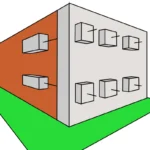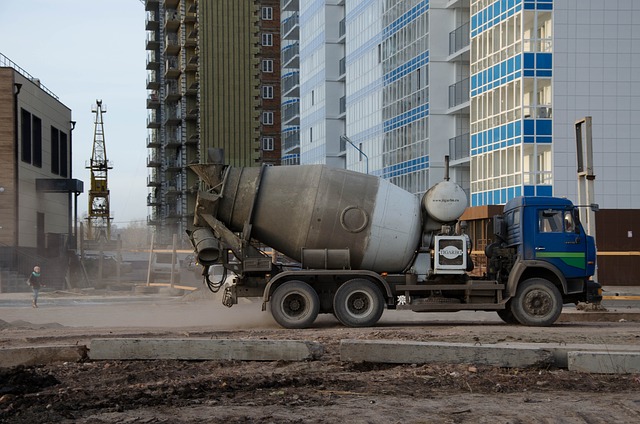Concrete and Mortar
In the world of construction, two fundamental materials widely used are concrete and mortar. Although they may appear similar at first glance, they possess distinct properties and are used in different situations. In this article, we will delve into the differences between concrete and mortar, addressing key aspects such as their compositions, common applications, and compressive strengths.
What is Concrete?
Concrete is a versatile and robust construction material primarily composed of cement, water, coarse aggregates (such as gravel or crushed stone), and fine aggregates (such as sand). Cement acts as the binder that binds the aggregates, creating a solid and resilient mass. This mixing and curing process gives concrete its durable properties and its ability to withstand heavy loads.
Common Uses of Concrete:
Building Structures: Concrete is widely employed in building construction, from foundations to columns and beams.
Pavements: Roads, driveways, and sidewalks are often constructed with concrete due to its durability and resistance to wear.
Civil Infrastructure: Bridges, dams, and tunnels are examples of infrastructure projects that use concrete for its ability to withstand adverse environmental conditions.
Prefabricated Elements: Many construction elements, such as prefabricated panels and beams, are made with concrete to ensure efficiency and consistency.

Concrete Compressive Strength:
The compressive strength of concrete is a critical measure of its load-bearing capacity, expressed in pounds per square inch (psi) or megapascals (MPa). Different types of concrete may have varying compressive strengths, but they typically range between 2,500 psi (17 MPa) and 6,000 psi (41 MPa). Special mixes exceeding 10,000 psi (69 MPa) can be used for projects requiring higher strength.
What is Mortar?
While mortar shares some ingredients with concrete, it is a distinct material. It is primarily composed of cement, water, and sand. The proportion of these ingredients may vary depending on the project’s needs. Unlike concrete, mortar generally does not contain coarse aggregates, giving it a smoother and more malleable texture.
Common Uses of Mortar:
Block or Brick Bonding: Mortar acts as the adhesive that bonds blocks or bricks in wall construction.
Repairs and Coatings: It is used to repair cracks in walls and apply coatings on existing surfaces.
Tile Installation: In tile placement, mortar is used to adhere tiles to the substrate.
Decorative Elements: In architectural design projects, mortar can be used to create decorative details.

Mortar Compressive Strength:
The compressive strength of mortar is lower compared to concrete, as it lacks coarse aggregates. It generally ranges between 750 psi (5 MPa) and 2,500 psi (17 MPa), depending on the ingredient proportions and the type of cement used. Although it does not have the same load-bearing capacity as concrete, mortar effectively serves its specific purpose in masonry and coating projects.
Comparison between Concrete vs. Mortar:
Composition:
– Concrete: Cement, water, coarse and fine aggregates.
– Mortar: Cement, water, sand.
Texture and Applicability:
– Concrete: Rougher texture, used in projects requiring higher structural strength.
– Mortar: Smoother and more malleable texture, used in bonding and coating applications.
Primary Use:
– Concrete: Load-bearing structures, pavements, infrastructure projects.
– Mortar: Block bonding, repairs, tile installation.
Compressive Strength:
– Concrete: Generally higher, ranging between 2,500 psi and 6,000 psi.
– Mortar: Generally lower, ranging between 750 psi and 2,500 psi.
Approximate Mixtures in Concrete and their Typical Strengths:
In the construction realm, concrete mix design is a critical aspect that directly influences its strength and durability. Approximate mixtures, though less precise than designed mixtures, are commonly used in projects where a balance between efficiency and adequate strength is sought. Below, we will explore typical approximate mixtures for concrete and the strengths they typically achieve.
Approximate Mixtures for Concrete:
Standard Mix (1:2:3):
– One of the most common approximate mixtures is the ratio of 1 part cement, 2 parts sand, and 3 parts coarse aggregate. This mixture provides a compressive strength typically ranging between 2,500 psi and 3,000 psi, making it suitable for general construction applications such as foundations and non-critical structural elements.
Reinforced Mix (1:1.5:2.5):
– For projects requiring higher strength, the mixture of 1:1.5:2.5, with 1 part cement, 1.5 parts sand, and 2.5 parts coarse aggregate, is commonly used. This mix can achieve compressive strengths ranging from 3,000 psi to 4,000 psi, ideal for demanding structural elements like beams and columns.
High-Strength Mix (1:1:2):
– In projects demanding exceptional strength, the mixture of 1:1:2, with 1 part cement, 1 part sand, and 2 parts coarse aggregate, is employed. This mix can achieve compressive strengths exceeding 4,000 psi, reaching up to 6,000 psi under certain circumstances. It is used in critical infrastructure projects and elements subjected to extreme loads.
It is crucial to highlight that these mixtures are approximate and may vary depending on factors such as material quality, mixing and curing conditions, and the expertise of construction personnel.

Approximate Mixtures in Mortar and their Typical Strengths:
Similar to concrete, mortar mix design is essential to achieve the desired consistency and strength. Approximate mortar mixtures are adjusted based on specific applications, and below are some typical mixtures and the strengths they usually achieve.
Standard Mix (1:3):
– A common mortar mixture is the ratio of 1 part cement to 3 parts sand. This mixture provides a manageable texture and is used for non-structural masonry applications. The typical strength of mortar with this mixture ranges between 750 psi and 1,500 psi.
Reinforced Mix (1:2):
– To obtain mortar with higher strength, the mixture of 1:2, with 1 part cement and 2 parts sand, can be employed. This mix can achieve compressive strengths ranging from 1,500 psi to 2,500 psi, suitable for structural masonry projects and repairs.
Tile Bonding Mix (1:4):
– In the specific case of tile installation, a mixture of 1 part cement and 4 parts sand is used. The strength of tile bonding mortar typically falls within the range of 1,000 psi to 1,500 psi, providing the necessary adhesion in coating applications.
Approximate mortar mixtures are approximate and may vary depending on project-specific conditions and requirements. The quality of materials and the proper execution of the mixing and curing process are determining factors in the final strength of the mortar.
Conclusions:
In summary, both concrete and mortar play fundamental roles in the construction industry, exhibiting distinctive characteristics and applications. The choice between these crucial materials is intrinsically linked to the specific requirements of each project, considering variables such as necessary strength, desired texture, and the load the structure.
About The Author
Samuel Parariá
Estudio: University of Francisco de Paula Santander.
Major: Civil Engineering.
Favorite Areas: Structures, Traffic Engineering, and Road Design.
Location: Cúcuta, Norte de Santander, Colombia.







Related
Methods of Concrete Mix Design